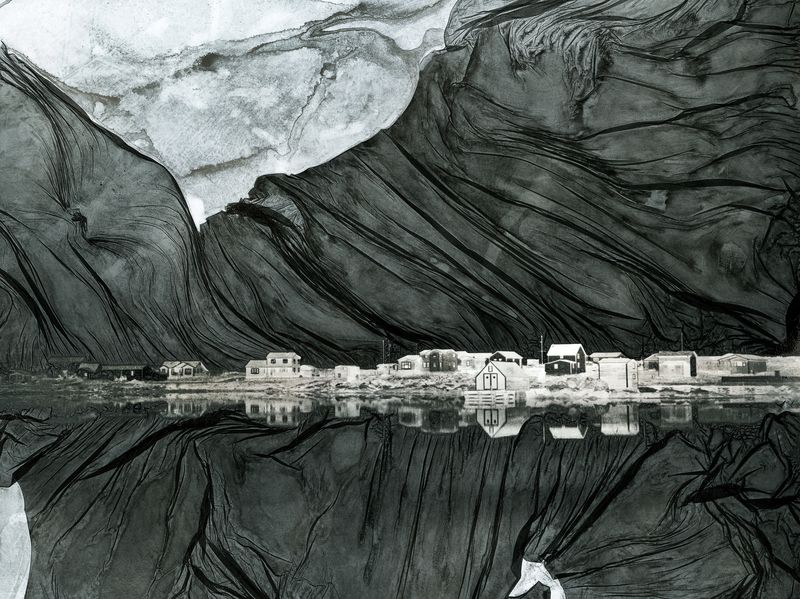These otherworldly photos convey climate change's effects on Arctic regions

Editor's note: As the 2021 U.N. Climate Change Summit convenes, NPR's Picture Show is taking a look at work by artists and visual journalists that highlight climate change.
What are we losing, in terms of our spiritual connection to the land, as the climate rapidly changes?
This is the question Ella Morton seeks to answer with her project, The Dissolving Landscape, a series of experimental analog photographs and short films that examine climate change in the Arctic and Subarctic landscapes of Canada and Nordic Europe.
She began this project in 2016 while attending an artist residency on a ship in Svalbard, Norway. The journey deepened her appreciation for the Arctic and engendered a curiosity in her to visit its other regions.
"I feel a power and mystery in these areas that is hard to describe. I have also come to understand the accelerated pace at which the North is warming," Morton said. "I want to capture these areas before they are permanently altered by climate change."
You might notice something unusual about these photos, as if they were taken in another realm. That's because Morton implements a couple of analog techniques – mordançage and film soaking.
Mordançage is a black and white process that was developed in the 1960's by French photographer Jean-Pierre Sudre. It degrades the shadow areas of silver gelatin prints, lifting the emulsion off the paper to create unique textures and veils.
Film soaking, also known as "film soup," is a process by which color film is soaked in ordinary household solutions, such as wine, beer, lemon juice, yogurt and dishwashing fluid. The acidity in these solutions warps the film, creating a variety of effects that speak to the sublime qualities of these landscapes, as well as their uncertain future.
"These techniques evoke two things: the sublime and magical qualities of the land, and the fragility and uncertainty of its future. On the one hand, these techniques create colors and textures that make the landscape appear ethereal, otherworldly and mysterious – they express the awe and inspiration that we might feel being there," Morton said. "On the other hand, they make the image literally dissolve, mirroring how the land is dissolving."
Part of her project The Dissolving Landscape are two short experimental films, Kajanaqtuq (2020) and Deepest Darkness, Flaming Sun (2020). The former features the voice of Inuk Elder Naulaq LeDrew speaking about her home in Nunavut, Canada and the latter is about the Svalbard Archipelago in the Norwegian Arctic, narrated by wilderness guide Marte Agneberg Dahl. Both films feature altered Super 8mm film footage of the regions.
Morton describes herself a poetic activist, articulating the profundity of our relationship with the land, and the emotional complexity of its change and loss as global warming unfolds.
"I hope that my photographs show the deep, intuitive power that the land stirs within me, and that others recognize this as something they have felt themselves. While climate change has been widely covered in news reportage and traditional documentary work, I believe that art can help to reach people on an emotional level," said Morton.
Ella Morton is a Canadian visual artist and filmmaker living in Toronto, on the land of the Mississaugas of the Credit, the Anishnabeg, the Chippewa, the Haudenosaunee and the Wendat peoples. You can follow her work at ellamorton.com or on Instagram @ellasharpmorton.
Grace Widyatmadja photo edited and produced this piece.
9(MDEwODYxNTQyMDEzNjAxODk2Nzc2NzNmYQ001))